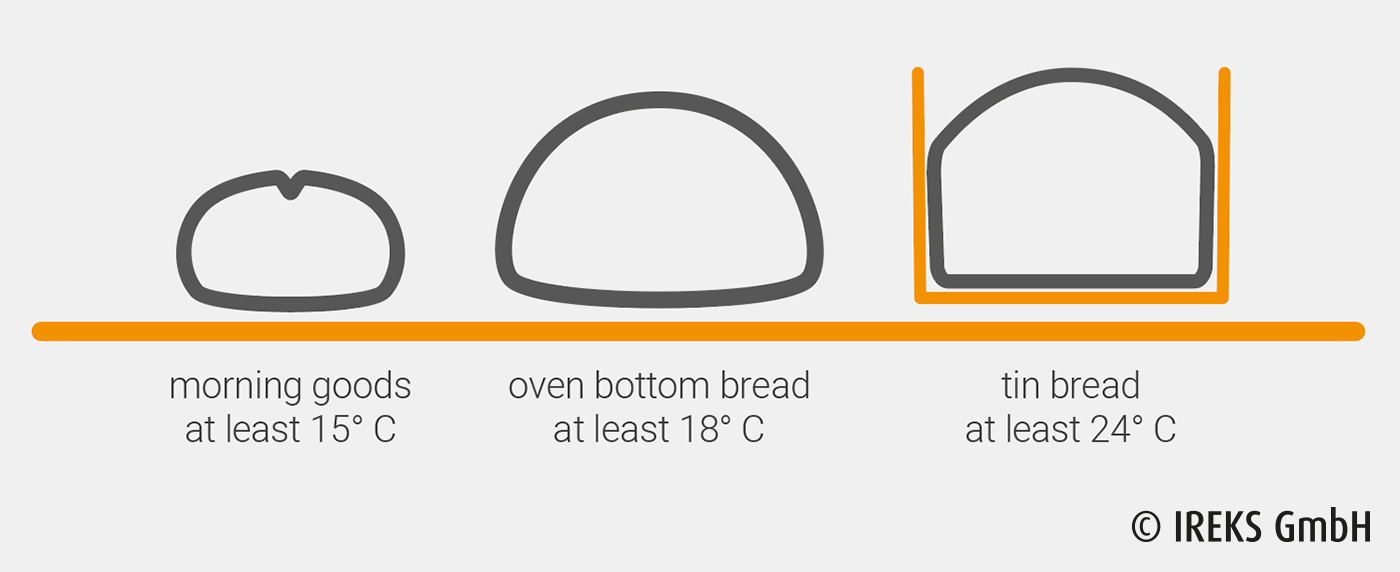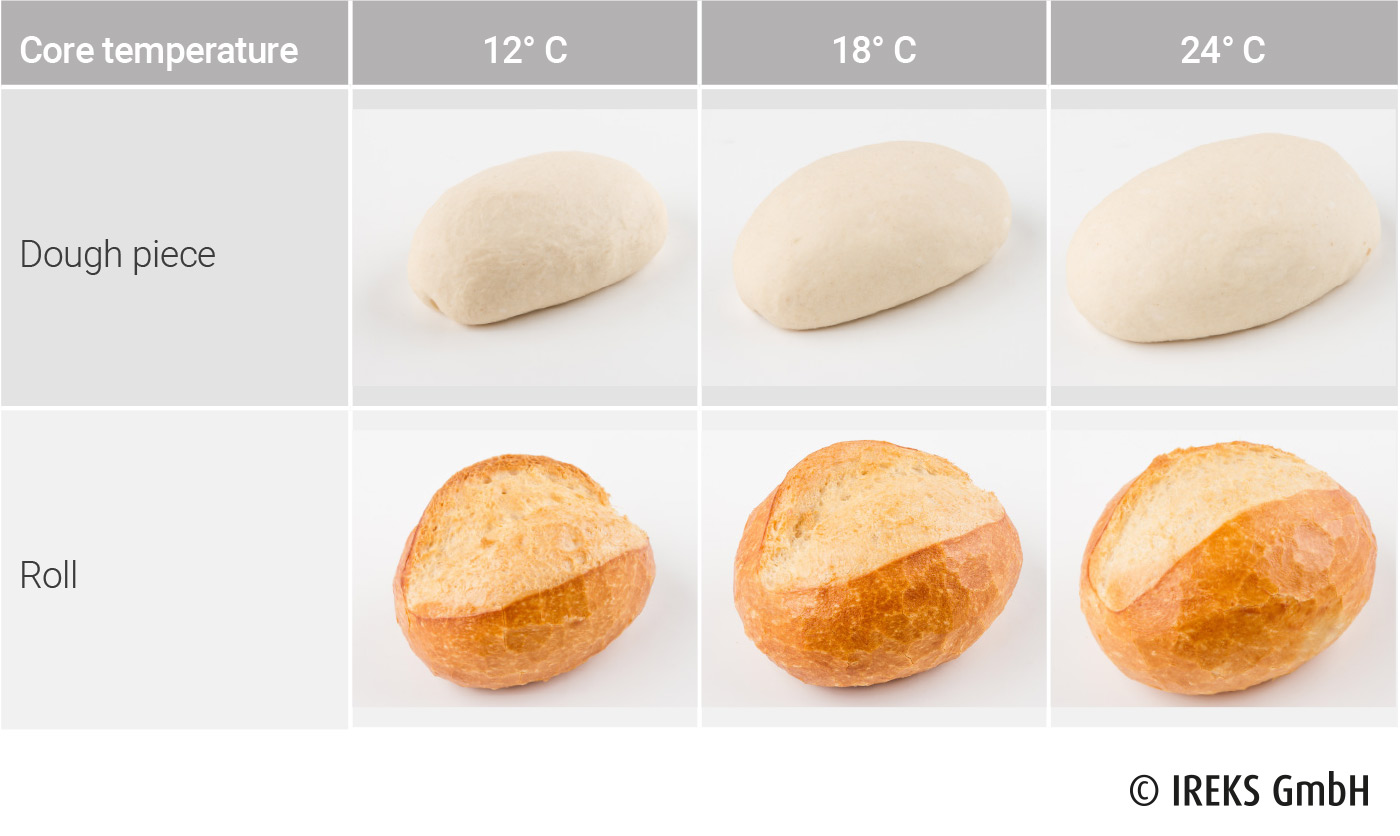In the case of cold dough methods, the core temperature of the dough pieces before baking is also decisive for successful baked goods. Depending on the size and the shape of the baked goods, a core temperature of 15 to 24° C is recommended. In this way, typical baked goods faults, such as a burst open baked goods crust, an irregular crumb texture or larger holes in the baked goods crumb, are avoided.
Wheat morning goods and bread
Before baking, attention has to be paid to the observance of the core temperature. Should the core temperature not be within the optimum range, baked goods faults can result. The consequences can be fluctuations in volume, an imperfect crust crack behaviour, hollow spaces in the crumb and faults in the crust.
In table 6.6, dough pieces and the corresponding baking results with different core temperatures are shown. Depending on the core temperature, the crust crack behaviour (from wide to narrow) and the volume of the rolls change. In the case of too cool core temperatures, hollow spaces can form in the crumb. Too high core temperatures can accompany this with an aerated crumb and little shine.


